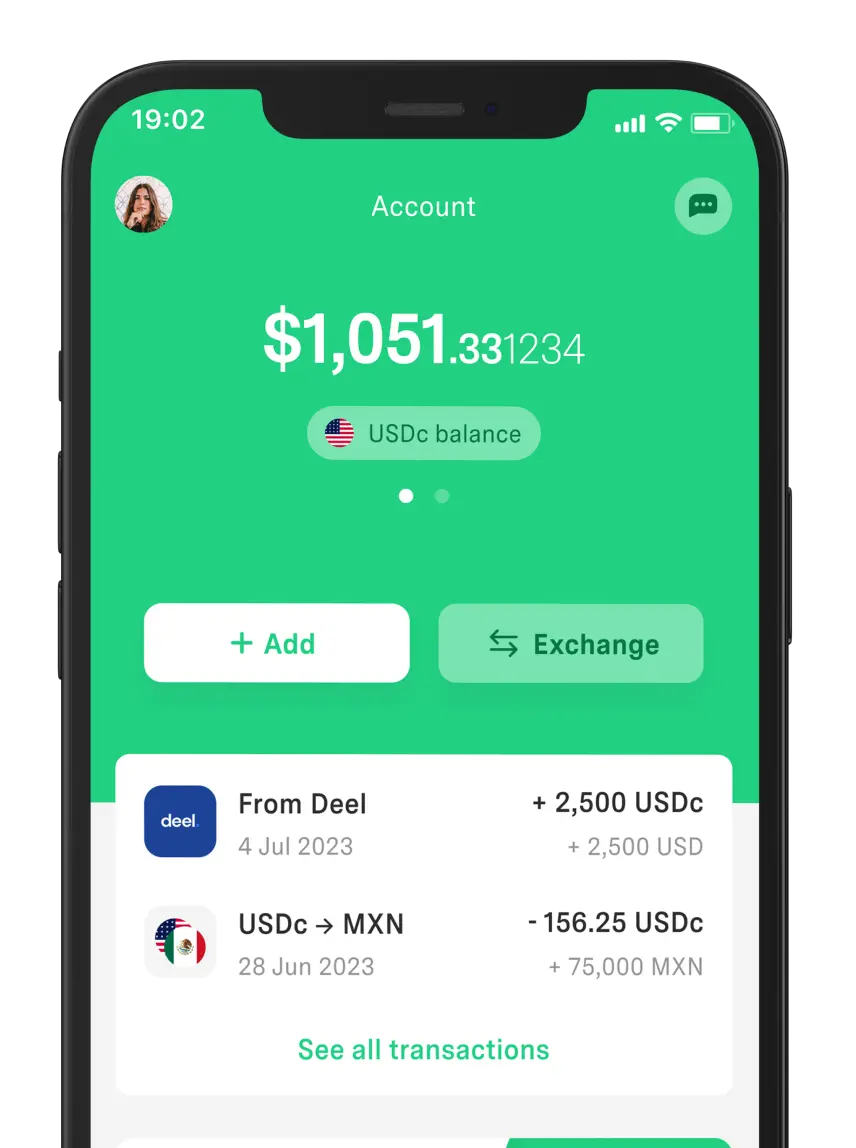 Freelancer tips
Freelancer tips How to Stop Procrastinating: Strategies and Practical Tips
Learn how to stop procrastinating by putting these proven strategies and tips into practice so you can be productive again and focus on what matters.



Burnout syndrome, or occupational burnout, is a state of physical, mental, and emotional depletion that arises when stress becomes chronic.
In recent years, it has become a global issue. In fact, the World Health Organization classified it as an occupational phenomenon that directly affects workers’ health.
Indeed, in Mexico, according to IBERO University, 75% of workers suffer from acute work-related stress.
And while anyone can experience its symptoms, freelancers and remote professionals may be at higher risk. Especially when long workdays combine with high demand and little separation between personal and work life.
Either way, caring for mental health is key to maintaining productivity and sustainable well-being. That’s why we prepared a post explaining what burnout syndrome is, its symptoms and causes… and most importantly, how to prevent it.
It’s a deep deterioration of energy, motivation, and mental clarity caused by prolonged job-related exposure. It’s also known as “occupational burnout” or, colloquially in Spanish, “being burned out”.
Although it’s not considered a disease in itself, it’s a direct consequence of unhealthy working conditions.
WHO recognizes it as an “occupational phenomenon,” since it typically appears when chronic workplace stress is poorly managed. In other words, when job demands consistently exceed time, energy, support, or recognition.
But it’s not like one-off stress, which is usually temporary and eases when a workload peak subsides. Burnout syndrome doesn’t go away just because the urgency ends; on the contrary, it lingers and begins to affect how you think, feel, and work.
Moreover, burnout gradually takes hold in your routine. That’s why you don’t notice it until you realize you’re no longer performing, you’re not enjoying things, and everything feels heavy.

Beyond occupational exhaustion, when you’re “burned out” you experience emotional fatigue and reduced professional efficacy—but that’s not all.
The most common symptoms of burnout syndrome include:
Mental symptoms:
Difficulty concentrating or finishing simple tasks.
Frequent errors or overlooking important details.
Feeling overwhelmed by simple tasks.
Difficulty making everyday decisions.
Emotional symptoms:
Lack of motivation for work that used to excite you.
Irritability or frequent bad mood without a clear reason.
A more cynical or negative attitude toward clients, managers, or projects.
A sense of emotional distance (doing the work on autopilot).
Physical symptoms:
Extreme tiredness almost every day.
Feeling like you have no energy to start the day.
Recurring discomfort: headaches, muscle tension, digestive issues.
Sleep problems: insomnia, nighttime awakenings, or non-restorative sleep.
Having several of these symptoms for weeks—especially if you work under constant pressure or without breaks—is a red flag for burnout.
Occupational burnout develops due to a combination of factors, so there are multiple reasons. However, some of the main causes that lead to burnout are:
Prolonged work overload is one of the main triggers of burnout. Too many projects, tight deadlines, or urgent tasks without sufficient rest or active recovery lead to exhaustion.
For freelancers and remote workers, this worsens when schedules aren’t clear and work extends into nights and weekends.
When you can’t decide how to organize your tasks, adjust your timing, or prioritize what matters, the sense of pressure increases. Over time, that mix of low autonomy and little control over work raises the risk of burnout.
Effective communication is key to reducing uncertainty and maintaining a healthy work environment. But in the absence of feedback, peer support, or leadership, work becomes heavier.
As noted, burnout syndrome generates emotional wear. One cause is having goals that are hard to reach, constant evaluations without respite, or almost no recognition.
Burnout doesn’t appear overnight—it develops gradually. It’s often confused with normal tiredness or temporary stress. Recognizing the signs is the first step to preventing it.
How to identify it?
Assess whether your daily energy (physical, mental, and emotional) decreases even when you rest.
Notice if you feel persistent fatigue that doesn’t improve with downtime.
Analyze whether your motivation has dropped or you struggle to start tasks.
Evaluate if there are changes in your concentration, memory, or mental clarity.
Pay attention to signs like irritability, apathy, or cynicism.
Consider whether you find it hard to disconnect after work hours.
Ask yourself if you’ve taken on more projects than you can handle.
Examine whether your sleep or rest habits are changing for the worse.
With this self-assessment, you can adjust habits and set healthy boundaries to reduce pressure before exhaustion advances.
If you want to prevent burnout, you need to rest more and reorganize how you work. That way, you can protect your energy and maintain a balance between productivity and well-being.
The following tips will help you strengthen boundaries, optimize your routine, and keep your mental load lighter:
Use Deep Work techniques to focus on what’s essential and avoid overload.
Organize your tasks and avoid multitasking to maintain mental stability.
Set work and rest hours, using Google Calendar to balance time.
Take real breaks throughout the day to recharge.
Maintain a balance between productivity and self-care.
Foster collaboration with your team to distribute workload and reduce emotional strain.
Engage in activities that support your physical and emotional well-being.
Design a workspace that helps you feel calm, integrating principles of color psychology.
Identify early warning signs and act before it’s too late.
Adopting these habits could help you sustain productivity without falling into exhaustion. Try putting them into practice and evaluate whether they work for you.
Overcoming burnout syndrome isn’t an immediate process—it requires real changes to your routine.
To gradually rebuild your emotional, physical, and mental well-being, we suggest:
Seeking professional support to understand the root of exhaustion and design a recovery plan.
Redefining your work and personal goals to avoid returning to excessive load.
Implementing rest routines that include breaks, digital disconnection, and genuine recovery time.
Incorporating mindful breathing exercises to improve mental clarity and reduce anxiety.
Creating a work environment that gives you calm and visual clarity.
Reorganizing your priorities to focus on tasks that add value without overwhelming you.
Adjusting your pace: start with small goals and only increase demand as you regain energy.
Reviewing the habits that contributed to burnout and replacing them with healthier practices.
Maintaining open communication with colleagues, clients, or leaders to align expectations.
Recognizing your progress and avoiding pushing yourself beyond what your recovery allows.
Recovering from burnout doesn’t mean returning to your previous pace; it means building a more sustainable way of working. Changes can be small but consistent so you can regain clarity, energy, and well-being without slipping back into exhaustion.
Burnout shouldn’t be normalized, and if you ignore its signs, it can progress quickly. Recognizing it isn’t a sign of weakness—it’s a way to protect your well-being.
So, it’s important to learn to identify physical, mental, and emotional exhaustion from its earliest manifestations. This will let you take action before it affects your health, productivity, and personal balance.
If you also want to improve your financial management, DolarApp can help simplify your international operations—both to send and receive digital dollars and euros for a fee of 3 USDc/EURc per transaction.
And if you want to convert your balance from one currency to another, we offer a transparent, convenient exchange rate.
Burnout syndrome is physical, mental, and emotional exhaustion caused by prolonged workplace stress. Its symptoms include extreme fatigue, irritability, low motivation, difficulty concentrating, sleep problems, and emotional detachment.
You might suspect burnout when you feel some of these signs and they persist for weeks. This combination includes constant tiredness, loss of energy, lack of motivation, difficulty concentrating, and trouble disconnecting from work.
Set clear boundaries, organize your tasks, take breaks, and avoid multitasking. It’s also a good idea to include relaxing activities, protect your sleep, and use organizational tools to balance your workload without overloading yourself.
Yes, burnout can be overcome with proper rest, professional support, and changes to how you work. With time, adjusted habits, and restored energy, it’s possible to regain balance and well-being.
Sources:
International Classification of Diseases – WHO
Psychological mechanisms of occupational burnout
Burnout syndrome among self-employed workers
Intersection between working from home and burnout syndrome

The world has borders. Your finances don’t have to.
 Freelancer tips
Freelancer tips Learn how to stop procrastinating by putting these proven strategies and tips into practice so you can be productive again and focus on what matters.

 Freelancer tips
Freelancer tips Business intelligence can help you gain a clear view of your company’s performance. Discover how to use it to make better decisions.


